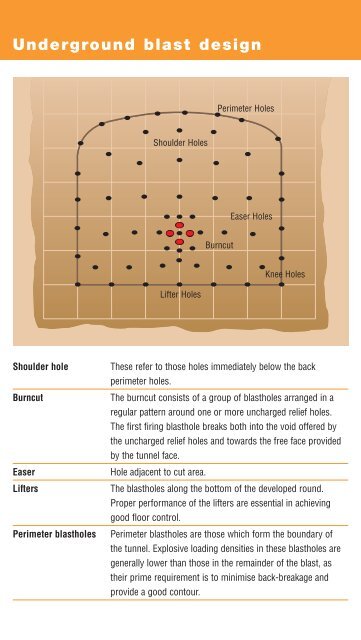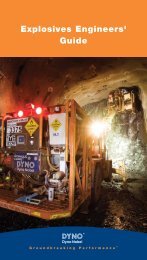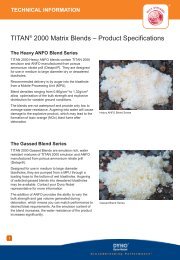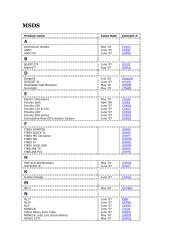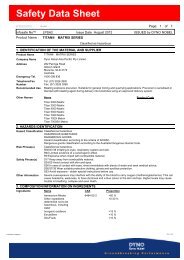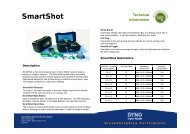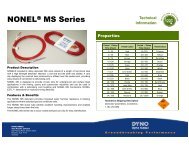Blasting and Explosives Quick Reference Guide 2010 - Dyno Nobel
Blasting and Explosives Quick Reference Guide 2010 - Dyno Nobel
Blasting and Explosives Quick Reference Guide 2010 - Dyno Nobel
You also want an ePaper? Increase the reach of your titles
YUMPU automatically turns print PDFs into web optimized ePapers that Google loves.
Underground blast design<br />
Shoulder hole These refer to those holes immediately below the back<br />
perimeter holes.<br />
Burncut The burncut consists of a group of blastholes arranged in a<br />
regular pattern around one or more uncharged relief holes.<br />
The first firing blasthole breaks both into the void offered by<br />
the uncharged relief holes <strong>and</strong> towards the free face provided<br />
by the tunnel face.<br />
Shoulder Holes<br />
Lifter Holes<br />
Easer Hole adjacent to cut area.<br />
Lifters The blastholes along the bottom of the developed round.<br />
Proper performance of the lifters are essential in achieving<br />
good floor control.<br />
Perimeter blastholes Perimeter blastholes are those which form the boundary of<br />
the tunnel. Explosive loading densities in these blastholes are<br />
generally lower than those in the remainder of the blast, as<br />
their prime requirement is to minimise back-breakage <strong>and</strong><br />
provide a good contour.<br />
Perimeter Holes<br />
Burncut<br />
Easer Holes<br />
Knee Holes


